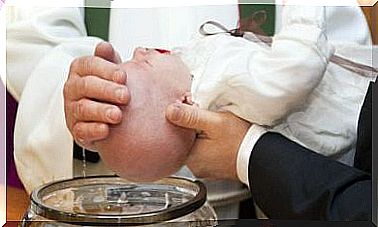Teach Your Baby To Sit

Gently encourage them to sit – just as you encouraged them to lift their head and roll over in their crib.
As long as you don’t force it and do the right exercises, your baby is in no danger learning this new stage of motor skills.
Learn to sit exercises
The development of the children takes place in phases. And a very important stage is learning how to sit without parental support or help.
As you work toward this goal, pediatricians recommend a series of exercises and games for your baby to help strengthen their hips and shoulders and maintain balance in the sitting position.
After 6 months, your baby should be able to lift his back, turn his head, and roll over while lying on his stomach. These are all signs that this is a good time to teach him how to sit.
Do not hesitate. Teach your baby to sit and practice these exercises.
1. Put it on your lap
S orks it whenever you can on your lap so that his back is up to you. Hold their hands to make them feel safe and sing a song to make them feel comfortable.
It is important that it fits properly. Make sure it’s as upright as possible.
2. Make a game out of it
Grab your baby under the arms and play while you lay them down. Make a happy face every time you put it in this position.
Then stop. Put it down. Go back and sit it back down with the same happy expressions on her face. Your baby will understand that it is a game and will adjust better to this new position.

3. Let it try
Lay your baby on its back. Put finger puppets on your fingers or clap your hands to get them excited and pay attention to you.
Then grab his little hands, take them, and let go of them while you say words of encouragement. This will excite your child and make them want to hold you.
If you see it holding you, try gradually to straighten it up as long as it makes an effort to straighten up.
It is not necessary for your baby to sit down during this exercise. If it tries, that’s more than enough.
4. Sit your baby down and put it down several times in a row
Lay your baby on its back. Lift it by your hands until it sits. Hold it for a few seconds and then put it back down.
Do these steps ten times in a row while singing or counting. You can count one when it is sitting and two when it is lying down.

5. Sit it down and hold it
Place your baby on a hard surface and push your arms forward until your hands are on the floor. Hold it by your hips and let it sit that way for a few seconds.
This exercise should be performed after the exercises explained earlier. At this point , your baby should be comfortable and understand the sitting position.
Teach your baby to sit
When studying, it is important that the child feels comfortable and remains interested.
Teach your baby to sit up, but if you find them crying or uncomfortable, don’t force them.
Pick up the exercises later and play with their favorite toys instead.
All phases of motor development must be achieved step by step and with his “consent”.









